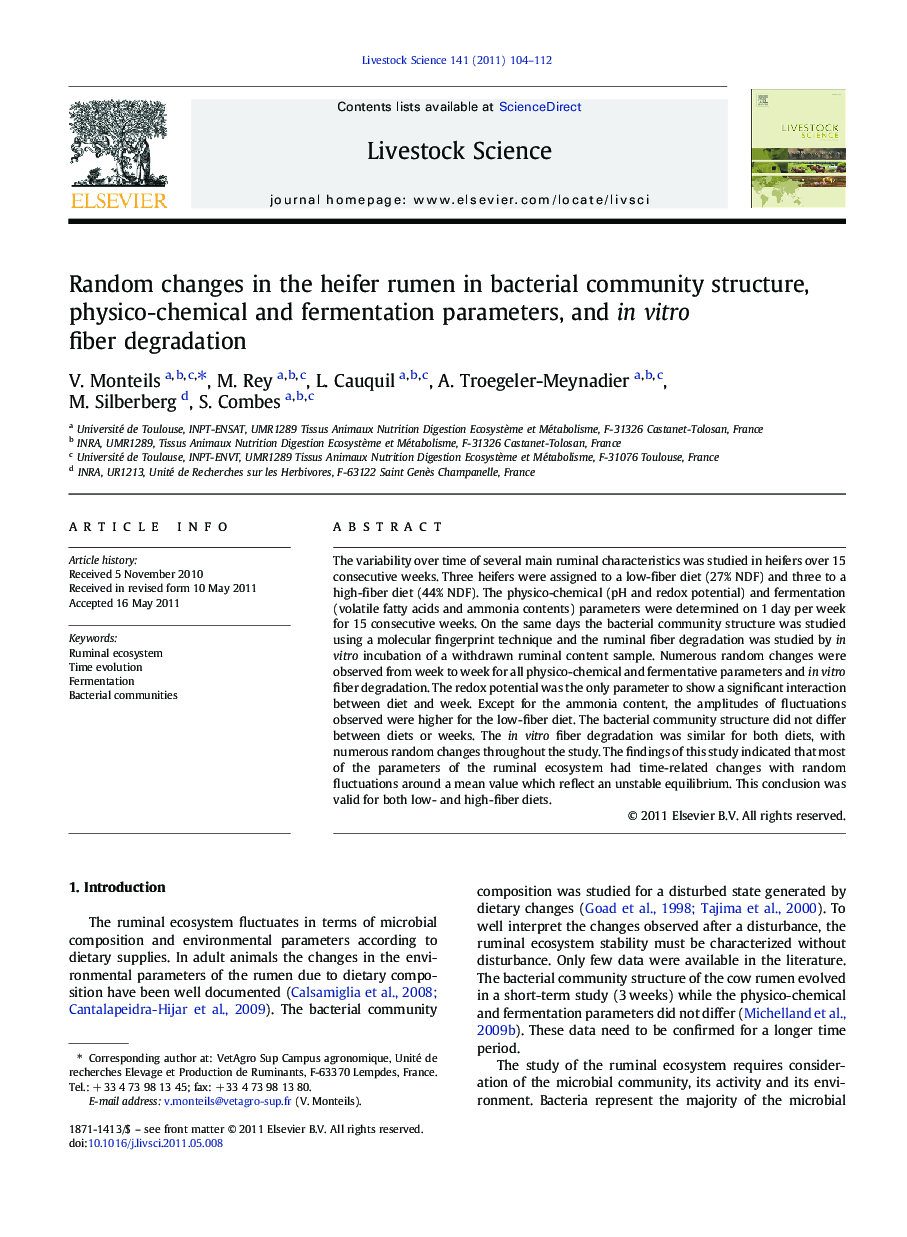| Article ID | Journal | Published Year | Pages | File Type |
|---|---|---|---|---|
| 5790629 | Livestock Science | 2011 | 9 Pages |
Abstract
The variability over time of several main ruminal characteristics was studied in heifers over 15 consecutive weeks. Three heifers were assigned to a low-fiber diet (27% NDF) and three to a high-fiber diet (44% NDF). The physico-chemical (pH and redox potential) and fermentation (volatile fatty acids and ammonia contents) parameters were determined on 1Â day per week for 15 consecutive weeks. On the same days the bacterial community structure was studied using a molecular fingerprint technique and the ruminal fiber degradation was studied by in vitro incubation of a withdrawn ruminal content sample. Numerous random changes were observed from week to week for all physico-chemical and fermentative parameters and in vitro fiber degradation. The redox potential was the only parameter to show a significant interaction between diet and week. Except for the ammonia content, the amplitudes of fluctuations observed were higher for the low-fiber diet. The bacterial community structure did not differ between diets or weeks. The in vitro fiber degradation was similar for both diets, with numerous random changes throughout the study. The findings of this study indicated that most of the parameters of the ruminal ecosystem had time-related changes with random fluctuations around a mean value which reflect an unstable equilibrium. This conclusion was valid for both low- and high-fiber diets.
Related Topics
Life Sciences
Agricultural and Biological Sciences
Animal Science and Zoology
Authors
V. Monteils, M. Rey, L. Cauquil, A. Troegeler-Meynadier, M. Silberberg, S. Combes,
